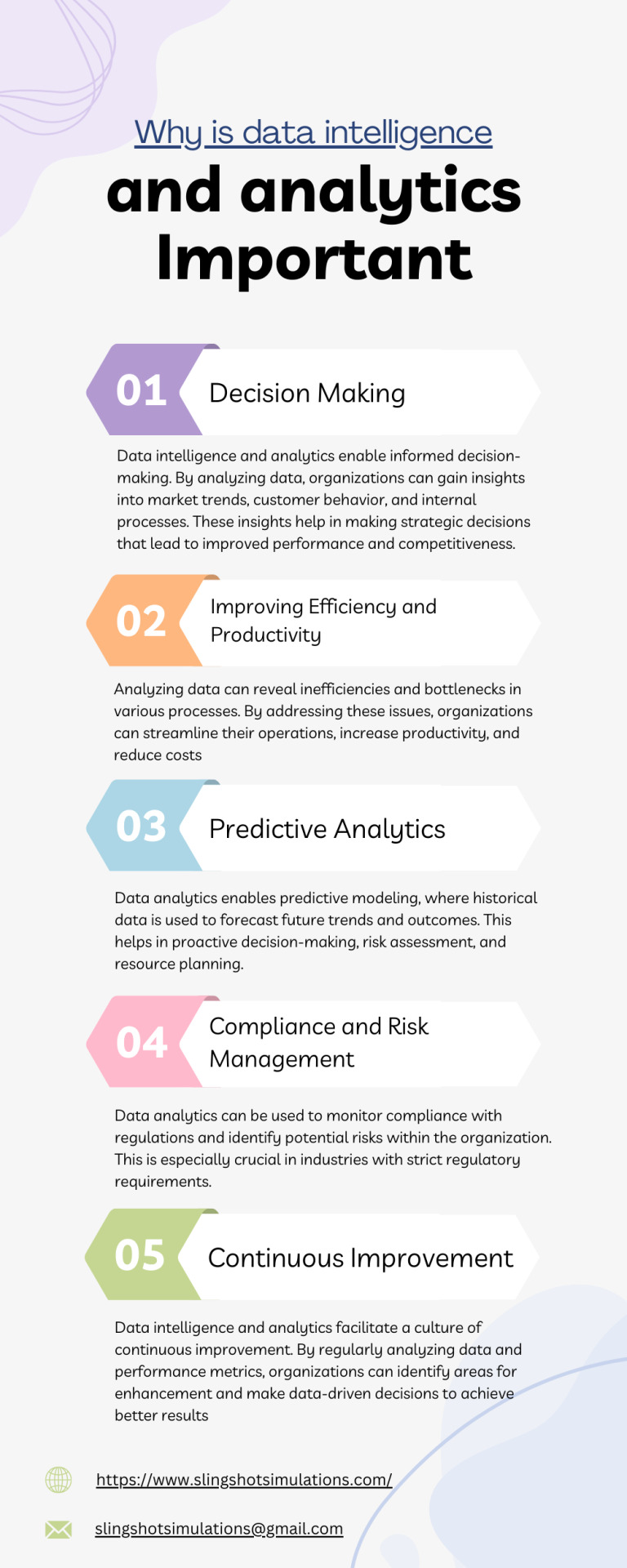#decision intelligence software
Explore tagged Tumblr posts
Text

Slingshot Simulations is a data Intelligence platform and analytics built to put AI in the hands of commercial leaders, to drive great decision making, all the time. Contact our dedicated team - Complete our contact form and a member of our team will be in touch shortly.
#data intelligence#data intelligence and analytics#data intelligence platform#data intelligence solutions#decision intelligence and analytics#decision intelligence platform#decision intelligence software#decision intelligence solutions#community data platforms#knowledge graph visualization#Meta data analysis#advanced analytics and data science#analytic process automation#analytics and automation process platforms#data integration software
0 notes
Text
AI Streamlining Decision-Making 2025: Transforming Business Efficiency

Introduction
In 2025, artificial intelligence (AI) is revolutionizing decision-making processes across industries, making operations faster, more accurate, and highly data-driven. With AI-powered analytics, predictive insights, and automation, businesses can optimize strategies and improve overall efficiency. This article explores how AI is streamlining decision-making in 2025, its applications, and the future it holds for businesses worldwide.
How AI is Transforming Decision-Making in 2025
1. Real-Time Data Processing for Faster Decisions
AI-powered algorithms can process vast amounts of data in real time, enabling companies to make swift and informed decisions. Businesses no longer have to rely on traditional data analysis, which often lags behind market trends.
2. Predictive Analytics for Strategic Planning
AI-driven predictive analytics help businesses anticipate trends and challenges before they arise. This allows companies to implement proactive strategies rather than reactive measures, ensuring competitive advantages in dynamic markets.
3. AI in Financial Decision-Making
AI is transforming financial forecasting, risk assessment, and investment strategies. By analyzing historical data and market patterns, AI enables businesses to make profitable financial decisions while minimizing risks.
4. Enhancing Customer Decision Journeys
Companies are using AI to personalize customer experiences by analyzing preferences and behaviors. AI-driven recommendation engines enhance decision-making in marketing, sales, and customer service.
5. AI-Driven Automation for Operational Efficiency
From supply chain management to HR processes, AI streamlines decision-making by automating repetitive tasks, reducing human error, and improving efficiency.
The Role of AI in Different Industries
AI in Healthcare Decision-Making
AI assists doctors in diagnosing diseases, recommending treatments, and predicting patient outcomes with high accuracy. AI-driven diagnostics speed up decision-making and improve patient care.
AI in Manufacturing & Supply Chain Management
Manufacturers leverage AI for inventory optimization, quality control, and production planning. AI-powered supply chain analytics reduce delays and optimize logistics.
AI in Marketing and Customer Engagement
AI helps marketers analyze consumer behavior and optimize campaigns, ensuring personalized and data-backed decision-making in advertising strategies.
AI in Corporate Governance
AI enhances corporate decision-making by analyzing legal and compliance risks, ensuring transparency, and mitigating potential business threats.
The Future of AI in Decision-Making
AI is expected to become even more sophisticated, integrating with blockchain, IoT, and quantum computing for enhanced decision intelligence. AI-driven platforms will offer real-time insights, self-learning capabilities, and autonomous decision-making systems.
Conclusion
AI in decision-making is revolutionizing industries, empowering businesses with data-driven insights, automation, and strategic planning. As we step into 2025, AI will continue to be a game-changer, improving efficiency, reducing risks, and driving growth. Companies that embrace AI will lead the future, making smarter and faster decisions in an increasingly competitive world.
#tagbin#writers on tumblr#artificial intelligence#tagbin boardroomai#tagbin ai solutions#ai trends 2025#AI streamlining decision-making 2025#AI in decision-making#AI-powered decision-making#AI business intelligence 2025#AI automation in decision-making#AI for strategic planning#AI-driven analytics#AI efficiency in business#AI decision-making software#AI governance and compliance
0 notes
Text

BTech CSE: Your Gateway to High-Demand Tech Careers
Apply now for admission and avail the Early Bird Offer
In the digital age, a BTech in Computer Science & Engineering (CSE) is one of the most sought-after degrees, offering unmatched career opportunities across industries. From software development to artificial intelligence, the possibilities are endless for CSE graduates.
Top Job Opportunities for BTech CSE Graduates
Software Developer: Design and develop innovative applications and systems.
Data Scientist: Analyze big data to drive business decisions.
Cybersecurity Analyst: Safeguard organizations from digital threats.
AI/ML Engineer: Lead the way in artificial intelligence and machine learning.
Cloud Architect: Build and maintain cloud-based infrastructure for global organizations.
Why Choose Brainware University for BTech CSE?
Brainware University provides a cutting-edge curriculum, hands-on training, and access to industry-leading tools. Our dedicated placement cell ensures you’re job-ready, connecting you with top recruiters in tech.
👉 Early Bird Offer: Don’t wait! Enroll now and take the first step toward a high-paying, future-ready career in CSE.
Your journey to becoming a tech leader starts here!
#n the digital age#a BTech in Computer Science & Engineering (CSE) is one of the most sought-after degrees#offering unmatched career opportunities across industries. From software development to artificial intelligence#the possibilities are endless for CSE graduates.#Top Job Opportunities for BTech CSE Graduates#Software Developer: Design and develop innovative applications and systems.#Data Scientist: Analyze big data to drive business decisions.#Cybersecurity Analyst: Safeguard organizations from digital threats.#AI/ML Engineer: Lead the way in artificial intelligence and machine learning.#Cloud Architect: Build and maintain cloud-based infrastructure for global organizations.#Why Choose Brainware University for BTech CSE?#Brainware University provides a cutting-edge curriculum#hands-on training#and access to industry-leading tools. Our dedicated placement cell ensures you’re job-ready#connecting you with top recruiters in tech.#👉 Early Bird Offer: Don’t wait! Enroll now and take the first step toward a high-paying#future-ready career in CSE.#Your journey to becoming a tech leader starts here!#BTechCSE#BrainwareUniversity#TechCareers#SoftwareEngineering#AIJobs#EarlyBirdOffer#DataScience#FutureOfTech#Placements
1 note
·
View note
Text

Risk Management Solutions
Protect your business with Cedar Rose's integrated risk management solutions. Comprehensive tools for identifying and mitigating threats.
#Risk Management Solutions#Supply Chain Risk Management#Supply Chain Risk#Data licensing#Compliance Software Solutions#Credit Risk Assessment#Data Intelligence#Decision Making Process
0 notes
Text

Revamping Business Intelligence with SmartMarket: Unlock Strategic Decision-Making with Location Insights
Discover how SmartMarket by Lepton Software revolutionizes business intelligence with powerful location-based insights. Learn how it empowers businesses to make strategic, data-driven decisions for growth and success.
#business intelligence#location data#business#decision making#location insights#lepton software#location based solutions#business analytics#gis
0 notes
Text
3 Data-Proven Ways Companies Can Increase AI Adoption and Boost Productivity
New Post has been published on https://thedigitalinsider.com/3-data-proven-ways-companies-can-increase-ai-adoption-and-boost-productivity/
3 Data-Proven Ways Companies Can Increase AI Adoption and Boost Productivity
As more companies explore how AI can drive productivity, one crucial aspect is often overlooked: how employees are actually adopting and using these tools in their day-to-day work. The question isn’t whether AI can enhance productivity—it’s how companies can effectively support employees at every stage of AI engagement to maximize ROI.
As CEO of Prodoscore, a leading provider of employee productivity and data intelligence software, I’ve seen firsthand how AI adoption—or the lack of it—plays out in the workplace. Leveraging data-driven insights from Prodoscore’s position at the nexus of AI and business, here are three key takeaways on how leaders can ensure AI tools are fully utilized across their organizations.
1. When it comes to AI usage, there are three distinct groups of employees.
As AI has become top of mind for the C-suite the discussion of AI adoption has moved on to tangible results. AI’s return on productivity can now be quantified and understood at a granular level that includes time spent and impact on revenue. Prodoscore’s recent data indicates that employees fall into three distinct categories when it comes to AI adoption.
Toe-dippers: These employees use AI sparingly, engaging for just over a minute per session. They may be experimenting with AI but have yet to incorporate it fully into their workflows.
Foot-waders: These are moderately engaged users that access AI tools 2-4 times per session and average just under three minutes of usage. These employees are testing the waters and looking to incorporate AI to enhance their work, but they still approach the tools with caution.
Swimmers: These are highly engaged users and potential AI leaders within the company. They interact with AI tools five or more times per session, with an average usage time of nearly six minutes. They understand the value AI brings to their roles and are committed to leveraging it to improve productivity.
Organizations that recognize these distinct groups of employment can tailor their approach to AI adoption accordingly. Furthermore, AI’s impact on productivity transcends industry lines. Whether it’s paralegals, IT professionals or managers, AI tools like OpenAI and others are proving to be useful across a broad spectrum of roles and industries. In each case, the use of AI has shown measurable boosts in efficiency and time saved.
2. A flexible, data-driven approach to AI adoption yields greater benefits.
To truly harness the power of AI, companies need to move beyond merely touting AI as a buzzword. Successful businesses use data to stay agile, which allows them to make intelligent and informed decisions regarding resources and efficiency.
For example, tracking the relationship between employee AI usage and productivity provides business leaders with clearer insights into how these tools influence business outcomes. According to Prodoscore research, on days when employees use tools like OpenAI or Gemini, they are 15-21% more productive than those who do not use such tools. Meanwhile, employees who engage with AI tools work an additional 90 minutes per day on average compared to those who don’t. They also spend more time collaborating using messaging and chat tools, fostering teamwork and greater internal communication.
These numbers underscore a vital point: AI’s influence on productivity is substantial. However, simply introducing AI into the workplace is not enough. A data-driven, dynamic approach that’s adjustable is essential to ensure that employees are adopting AI tools in ways that support their unique workflows and company goals.
Furthermore, the importance of communication between employees and managers cannot be overstated, particularly in hybrid work environments. According to Prodoscore’s data, 61% of managers have not spoken to at least one of their team members in a given week, while only 16% of managers maintain daily contact with all team members. The average communication gap is 3-4 days, which can hinder the effective use of AI tools and overall productivity.
To harness the full value of AI, companies must ensure that effective communication procedures are in place between managers and employees, especially regarding AI adoption. In hybrid environments, the importance of communication is even greater.
3. Training and established usage guidelines are essential.
Despite AI’s clear benefits, there is a noticeable gap between employees who feel comfortable using AI tools and those who do not. Closing this gap is critical, and it’s up to employers to provide the necessary training and establish clear guidelines on how to adopt AI tools.
Prodoscore’s data shows that while 24% of employees have used OpenAI or Gemini at least once, the level of engagement varies greatly. Half of these users interact with AI tools five or more times during their workday, averaging close to six minutes of usage. However, the other half only engage for just over two minutes.
This discrepancy highlights the need for ongoing training. Employees who are unsure of how to use AI tools effectively may shy away from them entirely, limiting the organization’s ability to reap AI’s full benefits, and potentially decreasing productivity by causing unnecessary stress or wasted time By providing comprehensive training and establishing clear usage guidelines, companies can ensure that more employees move beyond the initial “toe-dipping” stage and fully embrace AI.
Looking forward, AI will only improve productivity if employees commit to using the tools at their disposal. This commitment is more likely when companies provide training and clearly communicate expectations regarding AI use.
AI is shaping productivity – leaders must adapt.
The adoption of AI is already reshaping how businesses operate. Leaders now have access to more data than ever before to inform their decisions. However, it’s critical to strike a balance between relying on data and leveraging the expertise of experienced staff and senior leadership.
One of the most significant advantages of AI-powered large language models (LLMs) is their ability to drive business decisions in real time. As data flows in, organizational changes can be made dynamically, enabling businesses to pivot quickly and optimize outcomes. Yet, data should never dictate decisions on its own. Leaders must still rely on the expertise and intuition of their teams. Senior leadership holds invaluable knowledge that must be integrated with AI insights to create a well-rounded approach to productivity and innovation.
Ultimately, the most successful organizations will be those that can stay flexible, monitor AI usage trends closely, and make data-driven decisions. AI adoption is not a one-size-fits-all approach; it requires constant refinement, communication, and training to truly unlock its potential.
#adoption#agile#ai#AI adoption#AI and business#ai tools#AI-powered#approach#Business#C-suite#CEO#communication#Companies#comprehensive#data#data intelligence#data intelligence software#data-driven#data-driven decisions#efficiency#employee productivity#employees#employment#Experienced#Full#gap#gemini#guidelines#how#how to
0 notes
Text
Revolutionize your business decisions with SAP Analytics Cloud, the leading SAP software solution that delivers powerful insights and real-time analytics for smarter strategies.
#SAP Analytics Cloud#Business Decision-Making#SAP Software Solution#Business Intelligence Tools#Data-Driven Insights#Real-Time Analytics#Enterprise Analytics#Cloud Analytics Solutions#SAP Business Intelligence#Advanced Data Analytics
1 note
·
View note
Text
Maximizing Retail Profits: Harnessing B2B Price Optimization Software
In the ever-evolving world of retail and e-commerce, businesses are constantly seeking ways to gain a competitive edge. Among the many strategies employed, B2B Price Optimization and Management Software stands out as a game-changer. Price optimisation and management (PO&M) software solutions enable businesses to oversee and optimize the prices of their goods and services. These services also provide a growing range of sales intelligence advice, such as best-next-action suggestions and customer churn warnings. In the industry, vendors either focus on back-office price management and product management roles, or they focus on providing real-time sales intelligence to sales representatives and B2B digital commerce websites, or both. Quadrant Knowledge Solutions, a leading global advisory and consulting firm, has recognized the significance of this technology in their report, “B2B Price Optimization and Management Applications, 2023”. Quadrant Knowledge Solutions focuses on helping clients in achieving business transformation goals with Strategic Business, and Growth Advisory Services.
Download the sample report of Market Share: B2B Price Optimization and Management Software
Understanding the Retail and E-commerce Landscape
The retail and e-commerce industry is a highly dynamic and competitive space. Companies within this domain face the continuous challenge of pricing their products right to maximize profitability while staying attractive to their customers. In this context, pricing becomes a critical element of their strategy. Let's delve into some of these challenges:
Rapidly Changing Market Dynamics: Retail and e-commerce markets are highly volatile, with ever-shifting consumer preferences and market trends. Adapting to these changes in real-time is essential to stay competitive. Without the right tools, businesses risk making pricing decisions that are out of sync with market realities.
Intense Competition: In retail and e-commerce, competition is fierce. With numerous players offering similar products or services, pricing becomes a key differentiator. Setting prices too high can drive customers away, while pricing too low can erode profit margins.
Complex Supply Chain and Cost Structures: The retail and e-commerce sector often deals with complex supply chain operations and cost structures. Understanding the true costs associated with a product or service is essential for setting optimal prices. Traditional methods of cost calculation can be time-consuming and error-prone.
Customer Behaviour and Expectations: Today's consumers are more informed and price-sensitive than ever before. Their buying behaviour can change rapidly in response to various factors, including promotions, discounts, and market trends. Retailers must be agile in responding to these changes.
Competitor Pricing Strategies: Keeping a constant eye on competitor pricing is crucial. Businesses need to respond promptly to pricing moves made by competitors to remain competitive. Manual tracking and analysis of competitor pricing are arduous and inefficient processes.
Download the sample report of Market Forecast: B2B Price Optimization and Management Software
B2B Price Optimization and Management Software: A Necessity
B2B Price Optimization and Management Software is the solution to these challenges. This technology leverages advanced algorithms, data analytics, and real-time market insights to help businesses make data-driven pricing decisions. It empowers retail and e-commerce companies to optimize their prices efficiently while taking into account factors like demand fluctuations, competitor pricing, and customer behaviour.
Talk To Analyst: https://quadrant-solutions.com/talk-to-analyst
#In the ever-evolving world of retail and e-commerce#businesses are constantly seeking ways to gain a competitive edge. Among the many strategies employed#B2B Price Optimization and Management Software stands out as a game-changer. Price optimisation and management (PO&M) software solutions en#such as best-next-action suggestions and customer churn warnings. In the industry#vendors either focus on back-office price management and product management roles#or they focus on providing real-time sales intelligence to sales representatives and B2B digital commerce websites#or both. Quadrant Knowledge Solutions#a leading global advisory and consulting firm#has recognized the significance of this technology in their report#“B2B Price Optimization and Management Applications#2023”. Quadrant Knowledge Solutions focuses on helping clients in achieving business transformation goals with Strategic Business#and Growth Advisory Services.#Download the sample report of Market Share: B2B Price Optimization and Management Software#Understanding the Retail and E-commerce Landscape#The retail and e-commerce industry is a highly dynamic and competitive space. Companies within this domain face the continuous challenge of#pricing becomes a critical element of their strategy. Let's delve into some of these challenges:#Rapidly Changing Market Dynamics: Retail and e-commerce markets are highly volatile#with ever-shifting consumer preferences and market trends. Adapting to these changes in real-time is essential to stay competitive. Without#businesses risk making pricing decisions that are out of sync with market realities.#Intense Competition: In retail and e-commerce#competition is fierce. With numerous players offering similar products or services#pricing becomes a key differentiator. Setting prices too high can drive customers away#while pricing too low can erode profit margins.#Complex Supply Chain and Cost Structures: The retail and e-commerce sector often deals with complex supply chain operations and cost struct#Customer Behaviour and Expectations: Today's consumers are more informed and price-sensitive than ever before. Their buying behaviour can c#including promotions#discounts#and market trends. Retailers must be agile in responding to these changes.#Competitor Pricing Strategies: Keeping a constant eye on competitor pricing is crucial. Businesses need to respond promptly to pricing move#Download the sample report of Market Forecast: B2B Price Optimization and Management Software
0 notes
Text
Navigating The Future With Hyper-Automation Trends In 2023

In today's fast-paced business landscape, hyper-automation stands at the forefront of technological innovation, reshaping industries worldwide. This transformative approach, blending artificial intelligence (AI), machine learning (ML), robotic process automation (RPA), and more, is revolutionizing how organizations streamline operations, boost efficiency, and drive innovation. As we venture into 2023, let's delve into the hyper-automation trends in 2023 that are set to shape the future of work. Discover the latest trends in hyper-automation for 2023, from intelligent process automation to data-driven insights. Stay ahead in the age of automation.
#future of data and analytics#manufacturing process automation software#retail analytics trends#latest digital transformation trends#data decision making#intelligent process automation tools#automation with ai#ai in process automation#artificial intelligence and robotic process automation#software to automate business processes#rpa and machine learning#hyper automation#automation trends#automation trends 2023#make automation#automation process#intelligent process automation#automation business#business process automation#process automation trends#hyper automation technology#automation apps#ai automation#hyperautomation trendsautomation workflows#artificial intelligence automation#machine learning automation#ai process automation#process automation services
0 notes
Text
Unlocking Financial Insights: How Moolamore Aids in Resource Allocation
Smart capital, time, and labor allocation promotes maximum productivity, minimizes waste, and fosters long-term growth in your SME. There is a revolutionary tool on which you can always rely! Using Moolamore gives you the ability to make sound, data-driven decisions, ensuring you have enough funds for day-to-day operations, emergencies, and investment opportunities while mitigating cash flow risks. Let's get started on this blog!

Indeed! Embracing Moolamore gives you an advantage! It is the strategic solution you require to wisely allocate resources, avoid financial pitfalls, confidently navigate to success, and thrive in any economic climate. best cash flow forecasting software
#financial insights#resource allocation#financial management software#financial planning#budgeting tool#financial analytics#financial reporting#data-driven decision making#financial optimization#financial intelligence#financial forecasting
0 notes
Text
The conversation around AI is going to get away from us quickly because people lack the language to distinguish types of AI--and it's not their fault. Companies love to slap "AI" on anything they believe can pass for something "intelligent" a computer program is doing. And this muddies the waters when people want to talk about AI when the exact same word covers a wide umbrella and they themselves don't know how to qualify the distinctions within.
I'm a software engineer and not a data scientist, so I'm not exactly at the level of domain expert. But I work with data scientists, and I have at least rudimentary college-level knowledge of machine learning and linear algebra from my CS degree. So I want to give some quick guidance.
What is AI? And what is not AI?
So what's the difference between just a computer program, and an "AI" program? Computers can do a lot of smart things, and companies love the idea of calling anything that seems smart enough "AI", but industry-wise the question of "how smart" a program is has nothing to do with whether it is AI.
A regular, non-AI computer program is procedural, and rigidly defined. I could "program" traffic light behavior that essentially goes { if(light === green) { go(); } else { stop();} }. I've told it in simple and rigid terms what condition to check, and how to behave based on that check. (A better program would have a lot more to check for, like signs and road conditions and pedestrians in the street, and those things will still need to be spelled out.)
An AI traffic light behavior is generated by machine-learning, which simplistically is a huge cranking machine of linear algebra which you feed training data into and it "learns" from. By "learning" I mean it's developing a complex and opaque model of parameters to fit the training data (but not over-fit). In this case the training data probably includes thousands of videos of car behavior at traffic intersections. Through parameter tweaking and model adjustment, data scientists will turn this crank over and over adjusting it to create something which, in very opaque terms, has developed a model that will guess the right behavioral output for any future scenario.
A well-trained model would be fed a green light and know to go, and a red light and know to stop, and 'green but there's a kid in the road' and know to stop. A very very well-trained model can probably do this better than my program above, because it has the capacity to be more adaptive than my rigidly-defined thing if the rigidly-defined program is missing some considerations. But if the AI model makes a wrong choice, it is significantly harder to trace down why exactly it did that.
Because again, the reason it's making this decision may be very opaque. It's like engineering a very specific plinko machine which gets tweaked to be very good at taking a road input and giving the right output. But like if that plinko machine contained millions of pegs and none of them necessarily correlated to anything to do with the road. There's possibly no "if green, go, else stop" to look for. (Maybe there is, for traffic light specifically as that is intentionally very simplistic. But a model trained to recognize written numbers for example likely contains no parameters at all that you could map to ideas a human has like "look for a rigid line in the number". The parameters may be all, to humans, meaningless.)
So, that's basics. Here are some categories of things which get called AI:
"AI" which is just genuinely not AI
There's plenty of software that follows a normal, procedural program defined rigidly, with no linear algebra model training, that companies would love to brand as "AI" because it sounds cool.
Something like motion detection/tracking might be sold as artificially intelligent. But under the covers that can be done as simply as "if some range of pixels changes color by a certain amount, flag as motion"
2. AI which IS genuinely AI, but is not the kind of AI everyone is talking about right now
"AI", by which I mean machine learning using linear algebra, is very good at being fed a lot of training data, and then coming up with an ability to go and categorize real information.
The AI technology that looks at cells and determines whether they're cancer or not, that is using this technology. OCR (Optical Character Recognition) is the technology that can take an image of hand-written text and transcribe it. Again, it's using linear algebra, so yes it's AI.
Many other such examples exist, and have been around for quite a good number of years. They share the genre of technology, which is machine learning models, but these are not the Large Language Model Generative AI that is all over the media. Criticizing these would be like criticizing airplanes when you're actually mad at military drones. It's the same "makes fly in the air" technology but their impact is very different.
3. The AI we ARE talking about. "Chat-gpt" type of Generative AI which uses LLMs ("Large Language Models")
If there was one word I wish people would know in all this, it's LLM (Large Language Model). This describes the KIND of machine learning model that Chat-GPT/midjourney/stablediffusion are fueled by. They're so extremely powerfully trained on human language that they can take an input of conversational language and create a predictive output that is human coherent. (I am less certain what additional technology fuels art-creation, specifically, but considering the AI art generation has risen hand-in-hand with the advent of powerful LLM, I'm at least confident in saying it is still corely LLM).
This technology isn't exactly brand new (predictive text has been using it, but more like the mostly innocent and much less successful older sibling of some celebrity, who no one really thinks about.) But the scale and power of LLM-based AI technology is what is new with Chat-GPT.
This is the generative AI, and even better, the large language model generative AI.
(Data scientists, feel free to add on or correct anything.)
3K notes
·
View notes
Text
Generative AI Policy (February 9, 2024)

As of February 9, 2024, we are updating our Terms of Service to prohibit the following content:
Images created through the use of generative AI programs such as Stable Diffusion, Midjourney, and Dall-E.
This post explains what that means for you. We know it’s impossible to remove all images created by Generative AI on Pillowfort. The goal of this new policy, however, is to send a clear message that we are against the normalization of commercializing and distributing images created by Generative AI. Pillowfort stands in full support of all creatives who make Pillowfort their home. Disclaimer: The following policy was shaped in collaboration with Pillowfort Staff and international university researchers. We are aware that Artificial Intelligence is a rapidly evolving environment. This policy may require revisions in the future to adapt to the changing landscape of Generative AI.
-
Why is Generative AI Banned on Pillowfort?
Our Terms of Service already prohibits copyright violations, which includes reposting other people’s artwork to Pillowfort without the artist’s permission; and because of how Generative AI draws on a database of images and text that were taken without consent from artists or writers, all Generative AI content can be considered in violation of this rule. We also had an overwhelming response from our user base urging us to take action on prohibiting Generative AI on our platform.
-
How does Pillowfort define Generative AI?
As of February 9, 2024 we define Generative AI as online tools for producing material based on large data collection that is often gathered without consent or notification from the original creators.
Generative AI tools do not require skill on behalf of the user and effectively replace them in the creative process (ie - little direction or decision making taken directly from the user). Tools that assist creativity don't replace the user. This means the user can still improve their skills and refine over time.
For example: If you ask a Generative AI tool to add a lighthouse to an image, the image of a lighthouse appears in a completed state. Whereas if you used an assistive drawing tool to add a lighthouse to an image, the user decides the tools used to contribute to the creation process and how to apply them.
Examples of Tools Not Allowed on Pillowfort: Adobe Firefly* Dall-E GPT-4 Jasper Chat Lensa Midjourney Stable Diffusion Synthesia
Example of Tools Still Allowed on Pillowfort:
AI Assistant Tools (ie: Google Translate, Grammarly) VTuber Tools (ie: Live3D, Restream, VRChat) Digital Audio Editors (ie: Audacity, Garage Band) Poser & Reference Tools (ie: Poser, Blender) Graphic & Image Editors (ie: Canva, Adobe Photoshop*, Procreate, Medibang, automatic filters from phone cameras)
*While Adobe software such as Adobe Photoshop is not considered Generative AI, Adobe Firefly is fully integrated in various Adobe software and falls under our definition of Generative AI. The use of Adobe Photoshop is allowed on Pillowfort. The creation of an image in Adobe Photoshop using Adobe Firefly would be prohibited on Pillowfort.
-
Can I use ethical generators?
Due to the evolving nature of Generative AI, ethical generators are not an exception.
-
Can I still talk about AI?
Yes! Posts, Comments, and User Communities discussing AI are still allowed on Pillowfort.
-
Can I link to or embed websites, articles, or social media posts containing Generative AI?
Yes. We do ask that you properly tag your post as “AI” and “Artificial Intelligence.”
-
Can I advertise the sale of digital or virtual goods containing Generative AI?
No. Offsite Advertising of the sale of goods (digital and physical) containing Generative AI on Pillowfort is prohibited.
-
How can I tell if a software I use contains Generative AI?
A general rule of thumb as a first step is you can try testing the software by turning off internet access and seeing if the tool still works. If the software says it needs to be online there’s a chance it’s using Generative AI and needs to be explored further.
You are also always welcome to contact us at [email protected] if you’re still unsure.
-
How will this policy be enforced/detected?
Our Team has decided we are NOT using AI-based automated detection tools due to how often they provide false positives and other issues. We are applying a suite of methods sourced from international universities responding to moderating material potentially sourced from Generative AI instead.
-
How do I report content containing Generative AI Material?
If you are concerned about post(s) featuring Generative AI material, please flag the post for our Site Moderation Team to conduct a thorough investigation. As a reminder, Pillowfort’s existing policy regarding callout posts applies here and harassment / brigading / etc will not be tolerated.
Any questions or clarifications regarding our Generative AI Policy can be sent to [email protected].
2K notes
·
View notes
Text
★ Embrace Uncertainty for True Happiness

I recently started reading this amazing book about Emotional Intelligence and it totally opened my eyes to how important it is in our daily lives. Emotional Intelligence isn’t just about understanding our feelings—it’s also about being flexible and open to whatever life throws our way.
Just imagine this: You’ve set your heart on landing a specific job right after university. You imagine how perfect it will be working there, you already know how you'll organise your desk, and window shopping your future office outfits. But when things don’t go as planned i.e. you don't get the job, you feel crushed and start doubting yourself and feel you're not good enough or just plain unlucky in life. Personally I've been there TOO many times. This fixed mindset can blind you to other awesome opportunities that might be just as fulfilling.
However, I have some tips from the book on how to emotionally manage these kinds of situations!

▸ Step 1: Stay Open-Minded
Tell yourself, “I don’t know what the future holds, but I’m open to learning and growing from whatever comes my way.” Let go of those rigid expectations and embrace life’s unpredictability.
Why it matters: Staying open-minded helps you adapt to new situations and discover unexpected joys.
Real Talk: I once had a super fixed idea of becoming a neurosurgeon (brain doctor), but when I left highschool early, I thought I would be a failure forever. Then a Software Development apprenticeship opportunity popped up, I decided to give it a shot. It turned out to be one of the best decisions I ever made!
▸ Step 2: Focus on the Present
Make the most of your current experiences instead of always planning for some future “perfect” situation. Ask yourself, “What’s good about this moment right now?”
How to do it: Try practicing mindfulness through meditation or just take a few minutes each day to appreciate your surroundings.
Pro Tip: Start a gratitude journal. Every day, jot down three things you’re thankful for in the present moment. It’s a game-changer!
▸ Step 3: Embrace Growth in All Experiences
When challenges come your way, look for opportunities to learn or grow. Instead of labelling something as entirely good or bad, ask, “What can I take from this experience to make me stronger or wiser?”
Action step: After any setback, take a moment to reflect on what you’ve learned and how you can use it moving forward.
Personal Insight: During a tough breakup, instead of dwelling on the pain, I focused on what the relationship taught me about my needs and boundaries. This helped me grow and prepare for healthier relationships in the future.

Building emotional intelligence isn’t something you do overnight—it’s a continuous journey of self-discovery and adaptation.
So, as you navigate your own path, remember to embrace the uncertainty and trust that each experience, whether good or bad, is shaping you into a stronger, wiser version of yourself.
Here’s to your amazing journey ahead,

#emotional intelligence#it girl#it girl energy#growth#self growth#self improvement#self development#self love#becoming that girl#girlboss#girlblog#girlblogging#advice#book rec#self esteem#studyblr#tumblr girls#girlhood#womanhood
564 notes
·
View notes
Text
The Astrology About Your Difficult Placements & Turning Them Into A Career Opportunity
Note: This post is based on my personal observations and patterns I've noticed over the years. It's important to understand that no single placement in a chart can determine whether someone is “good” or “bad,” a success or a failure, or even something as extreme as a criminal. Astrology is complex, and the entire birth chart must be considered as a whole. What we often label as "difficult" placements can actually become powerful sources of strength if we choose to approach them with awareness, effort, and a growth mindset. These placements aren’t curses, they’re invitations to evolve. This post is based on Vedic/Sidereal Astrology.
Astrology is a lot like Google Maps, it shows you possible routes to your destination, but it’s still up to you which path to take. It can guide, not dictate. That’s why I find it disheartening when some astrologers deliver overly negative interpretations that leave people feeling helpless or afraid and making serious life decisions based on it. Every placement holds multiple possibilities, some more challenging than others. With awareness and the right mindset, even the toughest placements can become powerful tools for growth.
These placements don’t doom you, they challenge you to rise.
Mars in 12th - Hidden enemies, betrayal from co-workers/colleagues, vehicle accidents, high blood pressure, imprisonment, compulsive behavior, hit man.
On the bright side, this is a good placement for martial artists, military careers, architectural /structural engineering, psychologist, working in intelligence or secret service, crime scene investigator, MMA fighter, monk, athletes, etc.
Moon in 8th - Volcanic emotions often buried. Might be emotionally manipulative in a subtle way. Intense and secretive and hide their emotions. Reads people with their x-ray vision.
On the bright side, this is a good placement for healers, astrologer, detective, investigator, researcher, astronomer, criminal profiler, hospice worker, witch, therapist, grief counselor, cult leader, etc.
Venus in 8th - Can get into surface-level relationships for "convenience". STDs, in some cases. Financial ruin from the partners. Betrays/cheats or the other way around.
On the bright side, this is a good placement for relationship counselor, sex therapist, even porn stars, financial advisor, lobbyist, artists, script writer, photographers, videographers, model, financial firm chairman, business owner, club/casino owner/worker, etc.
North Node in 1st - Prone to attract scandals, betrayals. Identity crisis. Chases validation, success or people only to feel empty. Project an image that's not real.
On the bright side, this is a good placement for social media influencer, streamer, entrepreneur, lawyer, public figure, vlogger, model, activist, etc.
Sun in 12th - Side character in their own life. Hypochondriacs. Felt underappreciated or not recognized for your self-worth. Isolate themselves when depression hits.
On the bright side, this is a good placement for foreign settlement or just moving far away from birth place where they get recognized for being an entrepreneur, startup founder, politician or govt jobs in a foreign country/state, behind-the- scenes work in the movie industry, freelancer, software engineer, etc.
Venus in 6th - Overindulgence in food/drinks. Ovarian cyst for women. Menstrual issues. Prone to get STDs. Betrayal from women. Having a crazy ex.
On the bright side, this is a good placement for service workers, emergency care, veterinarian, doctor, nurse, mental health worker, wellness coach, interior designer, HR, cosmetologist, gynaecologist, pet groomer, dog walker, plastic surgeon, Hairstylist, Makeup specialist, homemaker, hospitality worker, etc.
Mars in 6th - Workplace drama. Chronic illness. Rude to others or other way around. Betrayal from men. Might be a smoker.
On the bright side, this is a good placement for chefs, firefighters, military careers, surgeon, personal trainer, conflict resolution expert, racer, raw material manufacturer, athletes, Managerial positions in the hospitality/retail industry, architect, engineer, etc.
South node in 4th - Detachment from home life or unstable family situation. Foster care, in some cases. Odd one out of the family in some cases.
On the bright side, this is a good placement for a travel consultant/guide, social worker, game developer, life coach, realtor, real estate agent, antique items seller, costume designer, comic artist, comedian script writer, animator, VFX specialist, foster care worker, paediatrician, nutritionist, etc.
North node in 8th - Prone to get into trouble with law enforcement. Into drugs. In and out of jail in some cases. Stalker or the other way around. Pimp, in some cases.
On the bright side, this is a good placement for a criminal lawyer, police officer, forensic investigator, crime or thriller writer, crisis management expert, industrial worker, manufacturer, de-addiction center worker, activist, law enforcement, etc.
Saturn in 4th - Childhood trauma or abuse. Protein or vitamin deficiency, in some cases. Punished/emotional neglect by a parent, in some cases.
On the bright side, this is a good placement for an architect, realtor, nuclear power plant engineer/worker, zookeeper, homeless shelter worker, factory worker, volcanologist, meteorologist, nutritionist, bio tech careers, newsreader, magazine/article writer, TV show host, small business owner, carpenter, etc.
Wanna go deeper into the layers of your placements? DM me for a complete astrology reading or a 5 year/8 year marriage report or synastry reading🌙💬 and check out my pinned post for pricing + details 💫💸
Let’s decode your cosmic chaos together ⭐
Part 2 of this post will be about retrograde planets!
#astrology#astrology readings#birth chart#astro observations#astro notes#spirituality#spiritual awakening#spiritual journey#zodiac signs#vedic astrology#vedic philosophy#vedic astro notes#vedicwisdom#vedic chart#vedic astro observations#astrologer#astro placements#astro community#astro tumblr#astrology notes#astrology signs#astrology tumblr#natal placements#natal chart#natal astrology#natal aspects#astrology blog#astrology chart#astrology observations#astrology community
295 notes
·
View notes
Text
Conspiratorialism as a material phenomenon

I'll be in TUCSON, AZ from November 8-10: I'm the GUEST OF HONOR at the TUSCON SCIENCE FICTION CONVENTION.

I think it behooves us to be a little skeptical of stories about AI driving people to believe wrong things and commit ugly actions. Not that I like the AI slop that is filling up our social media, but when we look at the ways that AI is harming us, slop is pretty low on the list.
The real AI harms come from the actual things that AI companies sell AI to do. There's the AI gun-detector gadgets that the credulous Mayor Eric Adams put in NYC subways, which led to 2,749 invasive searches and turned up zero guns:
https://www.cbsnews.com/newyork/news/nycs-subway-weapons-detector-pilot-program-ends/
Any time AI is used to predict crime – predictive policing, bail determinations, Child Protective Services red flags – they magnify the biases already present in these systems, and, even worse, they give this bias the veneer of scientific neutrality. This process is called "empiricism-washing," and you know you're experiencing it when you hear some variation on "it's just math, math can't be racist":
https://pluralistic.net/2020/06/23/cryptocidal-maniacs/#phrenology
When AI is used to replace customer service representatives, it systematically defrauds customers, while providing an "accountability sink" that allows the company to disclaim responsibility for the thefts:
https://pluralistic.net/2024/04/23/maximal-plausibility/#reverse-centaurs
When AI is used to perform high-velocity "decision support" that is supposed to inform a "human in the loop," it quickly overwhelms its human overseer, who takes on the role of "moral crumple zone," pressing the "OK" button as fast as they can. This is bad enough when the sacrificial victim is a human overseeing, say, proctoring software that accuses remote students of cheating on their tests:
https://pluralistic.net/2022/02/16/unauthorized-paper/#cheating-anticheat
But it's potentially lethal when the AI is a transcription engine that doctors have to use to feed notes to a data-hungry electronic health record system that is optimized to commit health insurance fraud by seeking out pretenses to "upcode" a patient's treatment. Those AIs are prone to inventing things the doctor never said, inserting them into the record that the doctor is supposed to review, but remember, the only reason the AI is there at all is that the doctor is being asked to do so much paperwork that they don't have time to treat their patients:
https://apnews.com/article/ai-artificial-intelligence-health-business-90020cdf5fa16c79ca2e5b6c4c9bbb14
My point is that "worrying about AI" is a zero-sum game. When we train our fire on the stuff that isn't important to the AI stock swindlers' business-plans (like creating AI slop), we should remember that the AI companies could halt all of that activity and not lose a dime in revenue. By contrast, when we focus on AI applications that do the most direct harm – policing, health, security, customer service – we also focus on the AI applications that make the most money and drive the most investment.
AI hasn't attracted hundreds of billions in investment capital because investors love AI slop. All the money pouring into the system – from investors, from customers, from easily gulled big-city mayors – is chasing things that AI is objectively very bad at and those things also cause much more harm than AI slop. If you want to be a good AI critic, you should devote the majority of your focus to these applications. Sure, they're not as visually arresting, but discrediting them is financially arresting, and that's what really matters.
All that said: AI slop is real, there is a lot of it, and just because it doesn't warrant priority over the stuff AI companies actually sell, it still has cultural significance and is worth considering.
AI slop has turned Facebook into an anaerobic lagoon of botshit, just the laziest, grossest engagement bait, much of it the product of rise-and-grind spammers who avidly consume get rich quick "courses" and then churn out a torrent of "shrimp Jesus" and fake chainsaw sculptures:
https://www.404media.co/email/1cdf7620-2e2f-4450-9cd9-e041f4f0c27f/
For poor engagement farmers in the global south chasing the fractional pennies that Facebook shells out for successful clickbait, the actual content of the slop is beside the point. These spammers aren't necessarily tuned into the psyche of the wealthy-world Facebook users who represent Meta's top monetization subjects. They're just trying everything and doubling down on anything that moves the needle, A/B splitting their way into weird, hyper-optimized, grotesque crap:
https://www.404media.co/facebook-is-being-overrun-with-stolen-ai-generated-images-that-people-think-are-real/
In other words, Facebook's AI spammers are laying out a banquet of arbitrary possibilities, like the letters on a Ouija board, and the Facebook users' clicks and engagement are a collective ideomotor response, moving the algorithm's planchette to the options that tug hardest at our collective delights (or, more often, disgusts).
So, rather than thinking of AI spammers as creating the ideological and aesthetic trends that drive millions of confused Facebook users into condemning, praising, and arguing about surreal botshit, it's more true to say that spammers are discovering these trends within their subjects' collective yearnings and terrors, and then refining them by exploring endlessly ramified variations in search of unsuspected niches.
(If you know anything about AI, this may remind you of something: a Generative Adversarial Network, in which one bot creates variations on a theme, and another bot ranks how closely the variations approach some ideal. In this case, the spammers are the generators and the Facebook users they evince reactions from are the discriminators)
https://en.wikipedia.org/wiki/Generative_adversarial_network
I got to thinking about this today while reading User Mag, Taylor Lorenz's superb newsletter, and her reporting on a new AI slop trend, "My neighbor’s ridiculous reason for egging my car":
https://www.usermag.co/p/my-neighbors-ridiculous-reason-for
The "egging my car" slop consists of endless variations on a story in which the poster (generally a figure of sympathy, canonically a single mother of newborn twins) complains that her awful neighbor threw dozens of eggs at her car to punish her for parking in a way that blocked his elaborate Hallowe'en display. The text is accompanied by an AI-generated image showing a modest family car that has been absolutely plastered with broken eggs, dozens upon dozens of them.
According to Lorenz, variations on this slop are topping very large Facebook discussion forums totalling millions of users, like "Movie Character…,USA Story, Volleyball Women, Top Trends, Love Style, and God Bless." These posts link to SEO sites laden with programmatic advertising.
The funnel goes:
i. Create outrage and hence broad reach;
ii, A small percentage of those who see the post will click through to the SEO site;
iii. A small fraction of those users will click a low-quality ad;
iv. The ad will pay homeopathic sub-pennies to the spammer.
The revenue per user on this kind of scam is next to nothing, so it only works if it can get very broad reach, which is why the spam is so designed for engagement maximization. The more discussion a post generates, the more users Facebook recommends it to.
These are very effective engagement bait. Almost all AI slop gets some free engagement in the form of arguments between users who don't know they're commenting an AI scam and people hectoring them for falling for the scam. This is like the free square in the middle of a bingo card.
Beyond that, there's multivalent outrage: some users are furious about food wastage; others about the poor, victimized "mother" (some users are furious about both). Not only do users get to voice their fury at both of these imaginary sins, they can also argue with one another about whether, say, food wastage even matters when compared to the petty-minded aggression of the "perpetrator." These discussions also offer lots of opportunity for violent fantasies about the bad guy getting a comeuppance, offers to travel to the imaginary AI-generated suburb to dole out a beating, etc. All in all, the spammers behind this tedious fiction have really figured out how to rope in all kinds of users' attention.
Of course, the spammers don't get much from this. There isn't such a thing as an "attention economy." You can't use attention as a unit of account, a medium of exchange or a store of value. Attention – like everything else that you can't build an economy upon, such as cryptocurrency – must be converted to money before it has economic significance. Hence that tooth-achingly trite high-tech neologism, "monetization."
The monetization of attention is very poor, but AI is heavily subsidized or even free (for now), so the largest venture capital and private equity funds in the world are spending billions in public pension money and rich peoples' savings into CO2 plumes, GPUs, and botshit so that a bunch of hustle-culture weirdos in the Pacific Rim can make a few dollars by tricking people into clicking through engagement bait slop – twice.
The slop isn't the point of this, but the slop does have the useful function of making the collective ideomotor response visible and thus providing a peek into our hopes and fears. What does the "egging my car" slop say about the things that we're thinking about?
Lorenz cites Jamie Cohen, a media scholar at CUNY Queens, who points out that subtext of this slop is "fear and distrust in people about their neighbors." Cohen predicts that "the next trend, is going to be stranger and more violent.”
This feels right to me. The corollary of mistrusting your neighbors, of course, is trusting only yourself and your family. Or, as Margaret Thatcher liked to say, "There is no such thing as society. There are individual men and women and there are families."
We are living in the tail end of a 40 year experiment in structuring our world as though "there is no such thing as society." We've gutted our welfare net, shut down or privatized public services, all but abolished solidaristic institutions like unions.
This isn't mere aesthetics: an atomized society is far more hospitable to extreme wealth inequality than one in which we are all in it together. When your power comes from being a "wise consumer" who "votes with your wallet," then all you can do about the climate emergency is buy a different kind of car – you can't build the public transit system that will make cars obsolete.
When you "vote with your wallet" all you can do about animal cruelty and habitat loss is eat less meat. When you "vote with your wallet" all you can do about high drug prices is "shop around for a bargain." When you vote with your wallet, all you can do when your bank forecloses on your home is "choose your next lender more carefully."
Most importantly, when you vote with your wallet, you cast a ballot in an election that the people with the thickest wallets always win. No wonder those people have spent so long teaching us that we can't trust our neighbors, that there is no such thing as society, that we can't have nice things. That there is no alternative.
The commercial surveillance industry really wants you to believe that they're good at convincing people of things, because that's a good way to sell advertising. But claims of mind-control are pretty goddamned improbable – everyone who ever claimed to have managed the trick was lying, from Rasputin to MK-ULTRA:
https://pluralistic.net/HowToDestroySurveillanceCapitalism
Rather than seeing these platforms as convincing people of things, we should understand them as discovering and reinforcing the ideology that people have been driven to by material conditions. Platforms like Facebook show us to one another, let us form groups that can imperfectly fill in for the solidarity we're desperate for after 40 years of "no such thing as society."
The most interesting thing about "egging my car" slop is that it reveals that so many of us are convinced of two contradictory things: first, that everyone else is a monster who will turn on you for the pettiest of reasons; and second, that we're all the kind of people who would stick up for the victims of those monsters.

Tor Books as just published two new, free LITTLE BROTHER stories: VIGILANT, about creepy surveillance in distance education; and SPILL, about oil pipelines and indigenous landback.


If you'd like an essay-formatted version of this post to read or share, here's a link to it on pluralistic.net, my surveillance-free, ad-free, tracker-free blog:
https://pluralistic.net/2024/10/29/hobbesian-slop/#cui-bono

Image: Cryteria (modified) https://commons.wikimedia.org/wiki/File:HAL9000.svg
CC BY 3.0 https://creativecommons.org/licenses/by/3.0/deed.en
#pluralistic#taylor lorenz#conspiratorialism#conspiracy fantasy#mind control#a paradise built in hell#solnit#ai slop#ai#disinformation#materialism#doppelganger#naomi klein
308 notes
·
View notes
Text
✧✿ oracle deck pick a card ✿✧
Find your Purpose

₊˚ʚᗢ₊˚✧゚for entertainment purposes, and other disclaimers ✧˚ ༘ ⋆。♡˚
deck: Find Your Purpose by Jess Sanders
top: Pile 1 → Pile 2 , bottom: Pile 3 → Pile 4




Inhale, exhale 3x, pick
✯✯ patreon ✯ free readings ✯ masterpost ✯✯
Pile 1
Your purpose or passion or "thing" doesn't have to become your work. It doesn't have to be something you make money from. Sometimes the things we love doing need space to be what they are without having to make them into something formalized. - Dr. Rebecca Ray
Journal: What did I love doing as a child that I no longer make time for?
I don't have to make money for it to matter.
Pile 2
When you say "yes" to others, make sure you aren't saying "no" to yourself. - Paulo Coelho
Journal: When do I say "yes" to myself?
I can be a kind and giving person and still put myself first.
Pile 3
The most difficult thing is the decision to act, the rest is merely tenacity. - Amelia Earhart
Journal: What is the one thing I can do today that I have been putting off?
I am unafraid to take action.
Pile 4
Dreaming, after all, is a form of planning. - Gloria Steinem
Journal: When was the last time I made the space for daydreaming?
My imagination is my superpower.

header image: pinterest // pngs: lochnesspng // I do not consent to my writing, blog’s likeness, or anything associated with my work, to be used to teach any machine learning software and artificial intelligence for any purpose.
#tarotblr#tarot#witchblr#astrology#paganblr#wiccablr#pick a card#pac reading#affirmations#manifestation#law of assumption#law of manifestation#law of the universe#law of abundance#spiritual awakening#spiritual journey#spirituality#oracle cards#oracle deck#glenda's guidance#life purpose#personal growth#healing#self love
90 notes
·
View notes